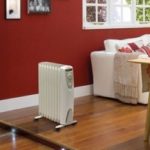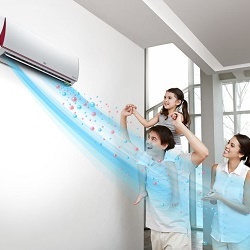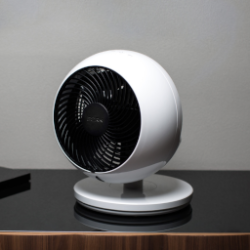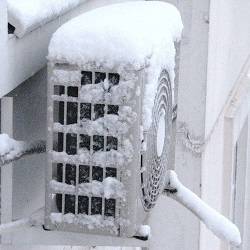Design and installation of floor heating convectors
Today, thanks to new technologies and fashion for stylish solutions in the interior, inside-field heating convectors replace the steel radiator under the window. It is impossible to say that floor convectors are something very new and absolutely not known to the average user. In fact, these are the same central heating batteries with additions, only skillfully hidden by the designers, to create modern creative design and special coziness in the house.

Content
Scope of application
Floor heating convectors are widely used in country cottageswhere the glazing is made in the form of a kind of gallery or panoramic windows with glass sliding doors.It is also useful in modern office buildings, banks - panoramic glazing is now used everywhere. It is in such cases that the floor-standing electric convector replaces the heating radiator, ideally fitting into the interior. Agree, it is difficult to imagine the view of a room with glass walls and lonely protruding radiators along a suite of windows.
Floor convector water or electric type creates a powerful thermal curtain along the panoramic windows, preventing cold air into the room, while maintaining comfortable conditions of stay regardless of the weather outside the window.
By placing a convector in front of the entrance door, you create an artificial thermal barrier for 90% of the cold air that penetrates the outside.
So, floor or the underground version of the convectors is used:
- in rooms with high windows from floor to ceiling, or where the low arrangement of window units does not allow the use of standard radiators;
- along fully glazed walls in gyms, greenhouses, shopping malls and cultural and mass entertainment centers;
- in child care facilities - kindergartens and nurseries to eliminate injuries when an unsuccessful fall near the heating radiator with the usual scheme.
Many homeowners are starting to build convectors. after eurorepair, not wanting to spoil the new modern interior with obsolete types of radiators. It is the installation of the floor convectors and their harmonious distribution that experts consider the right way to solve such problems, because they do not take up much space and fit organically into any interior without disturbing the created idyll.

Principle of operation
The appearance of the convector resembles a long case, covered with an openwork grille, which is fragile only in appearance: it is able to withstand loads of up to 40 kg. The principle of operation is quite simple: cold air is drawn in, then heated and returned to the room. According to the laws of physics, warm air rises, displacing cold streams downwards - thus, there is a heat exchange in the room.
Usually such devices as convectors in the floor, heat exchanger plate type - a rather dense row of aluminum plates on a single pipe, inside which hot water circulates.Heat from it is distributed on the plates, which heat the circulating air. Devices are like with fan, and without it. The effectiveness of the first is much higher.
The device is supplied with built-in temperature controller mechanical or electronic type for installation of the set temperature condition.
Built-in convectors for heating with proper selection and proper distribution throughout the room become the only sources of heat, coping with the task due to the systematic circulation of warm air flows throughout the space.

Product design
Electric or water convector based on the principle of natural air circulationwhich heats up, adjoining to the heat exchanger case. Simple, well-known scheme, and the unusualness of the convector itself is hidden in its design.
Housing
Usually it is a metal box from 1 to 2 m length. The body differs from floor and floor products.
- Floor appliances can decorate under benches or other furniture, they have supporting legs. The convenience of their design is that they do not require complex installation,except for hidden pipe or cable in the case when an electric convector is used.
- The body of convectors is outwardly unattractive - the emphasis here is on increasing strength and anti-corrosion ability. Built in floorsuch a box should function in the same way as the floor version. The height of the box reaches 150 mm, but on the surface we see only a decorative grille, which does not even protrude above the floor level - one of the basic requirements for the installation of this type of product.
Heat exchanger
Inside there is a special device, the design of which directly depends on what kind of convector: electric or water type.
Vnutripolny water convector for heating, as a rule, it has a heat exchanger in the form of a pipe, sometimes a coil, with densely welded ribs or transverse plates of non-ferrous metal. At both ends there are fittings that are responsible for connecting to the system. This type of floor convectors is the most practical, because it allows connection to any heating system: central or autonomous.Usually, everything is done in parallel to ensure equal temperature on all convectors in the circuit.
Electric convectorwhich is built into the floor, has several heating elements with stainless steel housings - such heating elements do not burn oxygen from the room air. Sometimes this type of heaters are equipped with a more efficient plate radiator, where the plates are made of non-ferrous metal: budget options are aluminum, and the more expensive ones are copper.
Installation of such devices is easier - you just need to ensure the supply of the power cable. They are usually installed with a fan, which ensures an even distribution of the flow of warm air throughout the room. Adjustment of such convectors is carried out by automatics, the user only sets the limit of the desired temperature. The microclimate is constant and quite comfortable, here is just one drawback - high power consumption.

Decorative grill
The installation of the floor convectors completes a rather solid device made of metal,durable polymers or custom-made user from valuable species of exotic trees - decorative lattice. Experts advise to pay special attention to the selection appearance of the lattice in accordance with the design style of the room - it should fit harmoniously into the interior, without interfering with the free movement of the occupants, ideally to let the air flow through.
Additional devices
Many convectors, for greater efficiency, come with fan, sometimes even a few - the result is a system of forced circulation. In addition, many devices, regardless of the source of heating the air flow, are completed sensors and thermostatsthat provide the optimum temperature setting.
A special type of built-in convectors are the so-called fan coils - special systems that can simultaneously provide ventilation with air conditioning, as well as heating the entire room. The most difficult of them is the built-in version of a four-pipe heat exchanger with simultaneous connection to the heating system and to the coolant cooler with an exotic name. chiller.
Simpler options - single-circuit, two-pipe - require seasonal switching with the obligatory call of the master.
All analogues fan coil systems are equipped with fans to ensure the forced circulation of air flow.

Pros and cons of use
An electric floor or water heating convector works much better. systems "warm floor"where the main disadvantage is the gradual cracking of parquet or laminate over time. If you have children, the advantages of the built-in system are also obvious: skin burns are excluded from touch, more space is made available for outdoor games.
I will not speak about repair any more - the convector maintenance is many times cheaper than the simplest floor heating system, and its installation does not take much effort. It is as easy to pick up a convector as an ordinary heater, but choosing a warm floor for your apartment is quite a laborious process.
The disadvantages of convector heating include:
- during the movement of the air flow all the dust in the room settles on the decorative grilles;
- rooms with ceiling heights above 3 meters will not be heated efficiently.
Built-in convectors are expensive types of heating, but they allow you to save on utility bills, if you correctly calculate their power.
Choosing a convector
First of all, you need to determine a sufficient number of heating convectors for their subsequent placement in the floor of your house. Before you make a purchase, you need to calculate how much heat we need to heat the entire room.
For a comfortable stay you need about 1 kW per 10 square meters. m, while the leakage of heat should not be - heat insulation of the whole house should be without loss. Each product must indicate its capacity in the passport, so the necessary calculations can be made, although it is not as easy as it seems.
For this we need to take into account many reasons and special coefficients depending on the glass, the location of the room and other things. In the literature this is all indicated, and every homeowner himself can calculate everything. The main task is to choose devices in such a way that all rooms have the same temperature in order to eliminate the appearance of drafts.

This table will help you when choosing a convector,how to choose the most suitable option - an independent solution for each homeowner. It is necessary to take into account that devices with a fan are much more productive.
Floor convector made do it yourself - the dream of every home craftsman, but there are many nuances, from the strength of the case to the coordinated work of all the details. It is better to choose a proven manufacturer - it will save you from being fake and protect you from further unpredictable negative consequences. The correct built-in convector will be the perfect complement to the interior and will warm you in the cold season.

/rating_off.png)












